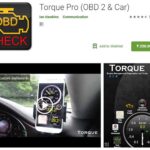When it comes to car maintenance, especially for performance vehicles like the 2016 Subaru STI, understanding your vehicle’s systems is crucial. One essential component for diagnostics and maintenance is the On-Board Diagnostics II (OBD2) port. Knowing the 2016 Sti Obd2 Location is not just about plugging in a code reader; it’s about understanding how your car’s computer communicates and how you can keep your settings intact even when disconnecting the battery.
Why Knowing Your OBD2 Port Location Matters
Modern cars like the 2016 STI are equipped with numerous electronic control modules that learn and optimize various aspects of the car’s performance. These modules store data such as fuel trims, idle settings, and transmission shift points. Disconnecting the car battery can lead to a loss of power to these modules, causing them to lose their learned settings. This can result in temporary issues like rough idling or needing to reset your radio presets and clock.
For everyday car owners, this might be a minor inconvenience. However, for enthusiasts who are particular about their STI’s performance and settings, or for those performing DIY maintenance, preventing this memory loss is important.
The OBD2 Port: A Power Source for Memory Preservation
While in some vehicles, you might maintain power through accessory outlets during a battery change, Subaru vehicles, including the 2016 STI, typically don’t offer constant power through these outlets. This is where the OBD2 port comes into play. Specifically, pin 16 of the OBD2 connector is designed to be constantly powered. This feature allows technicians and DIYers to connect an external 12V power source to maintain power to the car’s systems while the battery is disconnected.
Many service centers utilize specialized adapters that connect a 12V supply, like a portable jump starter, through the OBD2 port. This connection, often fused at 7.5 Amps, provides enough power to keep the control modules and memory settings alive during battery swaps or other maintenance tasks requiring battery disconnection.
Finding the 2016 STI OBD2 Location
Locating the OBD2 port in your 2016 Subaru STI is generally straightforward. You’ll typically find it under the dashboard on the driver’s side. Specifically, it is usually situated in the area above your pedals and below the steering column. You might need to crouch down and look upwards to spot it. It’s a 16-pin, trapezoid-shaped connector, and should be easily identifiable.
[Placeholder for image of OBD2 port location under dashboard]
While the exact positioning can vary slightly, it’s generally in this area for most vehicles, including the 2016 STI. Consulting your owner’s manual can provide a precise location if you are having trouble finding it.
A Word of Caution: The 7.5 Amp Fuse
Using the OBD2 port to maintain power is a helpful technique, but it’s crucial to be aware of the 7.5 Amp fuse typically associated with this circuit. The power draw of the car’s modules in standby is minimal and well within this fuse’s limit. However, if you inadvertently turn on accessories like interior lights (by opening a door) or the headlights while the car battery is disconnected and power is supplied through the OBD2 port, you risk exceeding the 7.5 Amp limit.
If the current draw surpasses 7.5 Amps, the fuse will blow. This effectively cuts off the power supply and results in the same memory loss you were trying to prevent – your clock and radio will reset, and the engine control module (ECM) might need to relearn its settings, potentially causing a temporary rough idle.
It’s also important to note that a blown fuse in this circuit will not trigger a Check Engine Light (CEL). However, it might prevent an OBD2 code reader from powering up and communicating with your car’s computer if the reader relies on the car’s power.
Conclusion: OBD2 Port and Your 2016 STI
Understanding the 2016 STI OBD2 location and its potential use as a power source is a valuable piece of knowledge for any STI owner. Whether you are performing routine maintenance or preparing for a battery replacement, using the OBD2 port method can save you from resetting your car’s learned settings. Just remember to exercise caution and avoid drawing excessive current to prevent blowing the fuse and defeating the purpose. By being informed and careful, you can ensure a smoother maintenance process for your 2016 Subaru STI.
